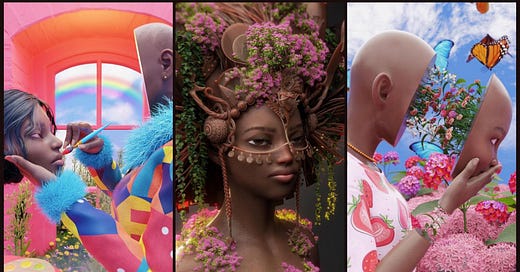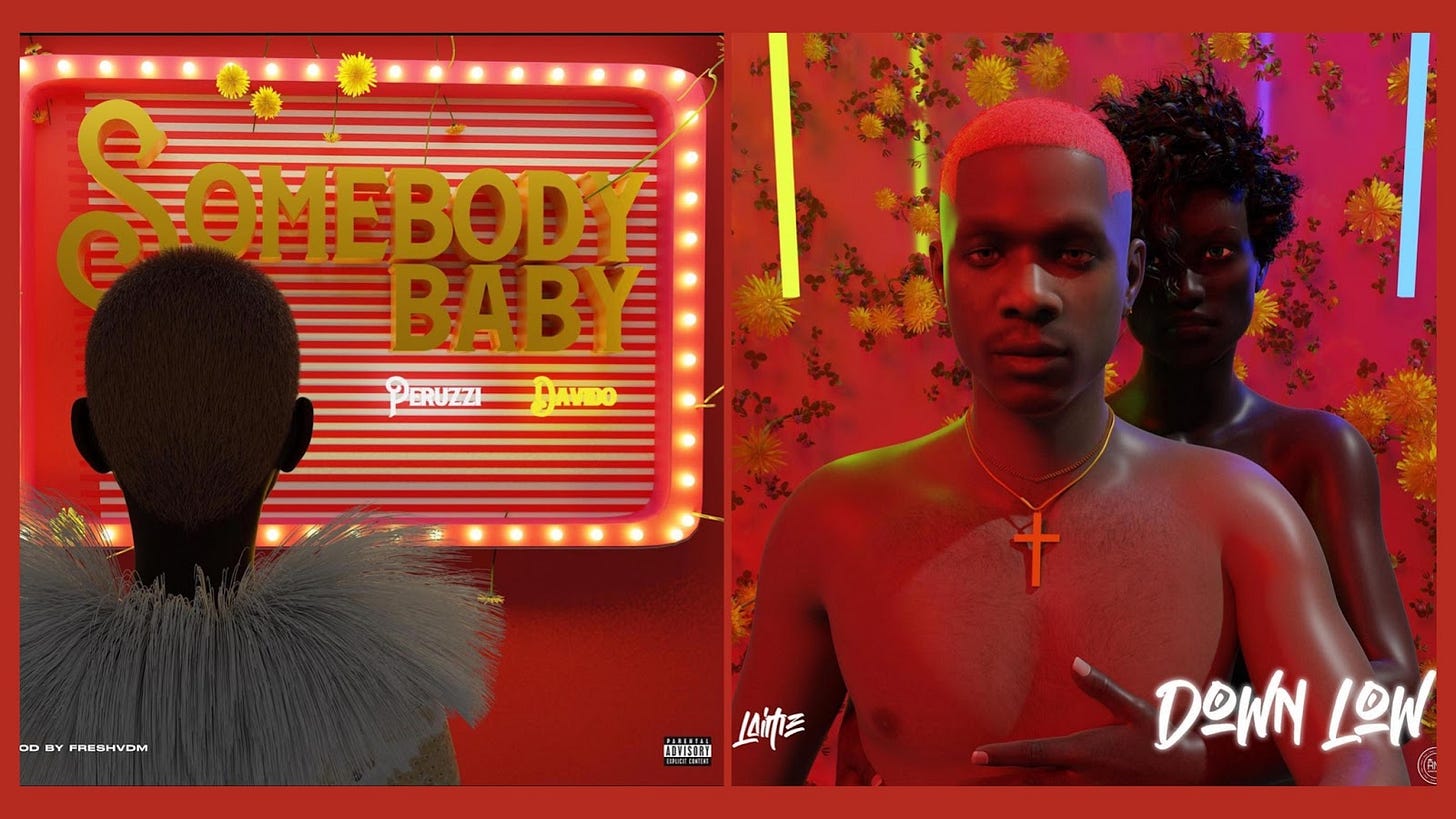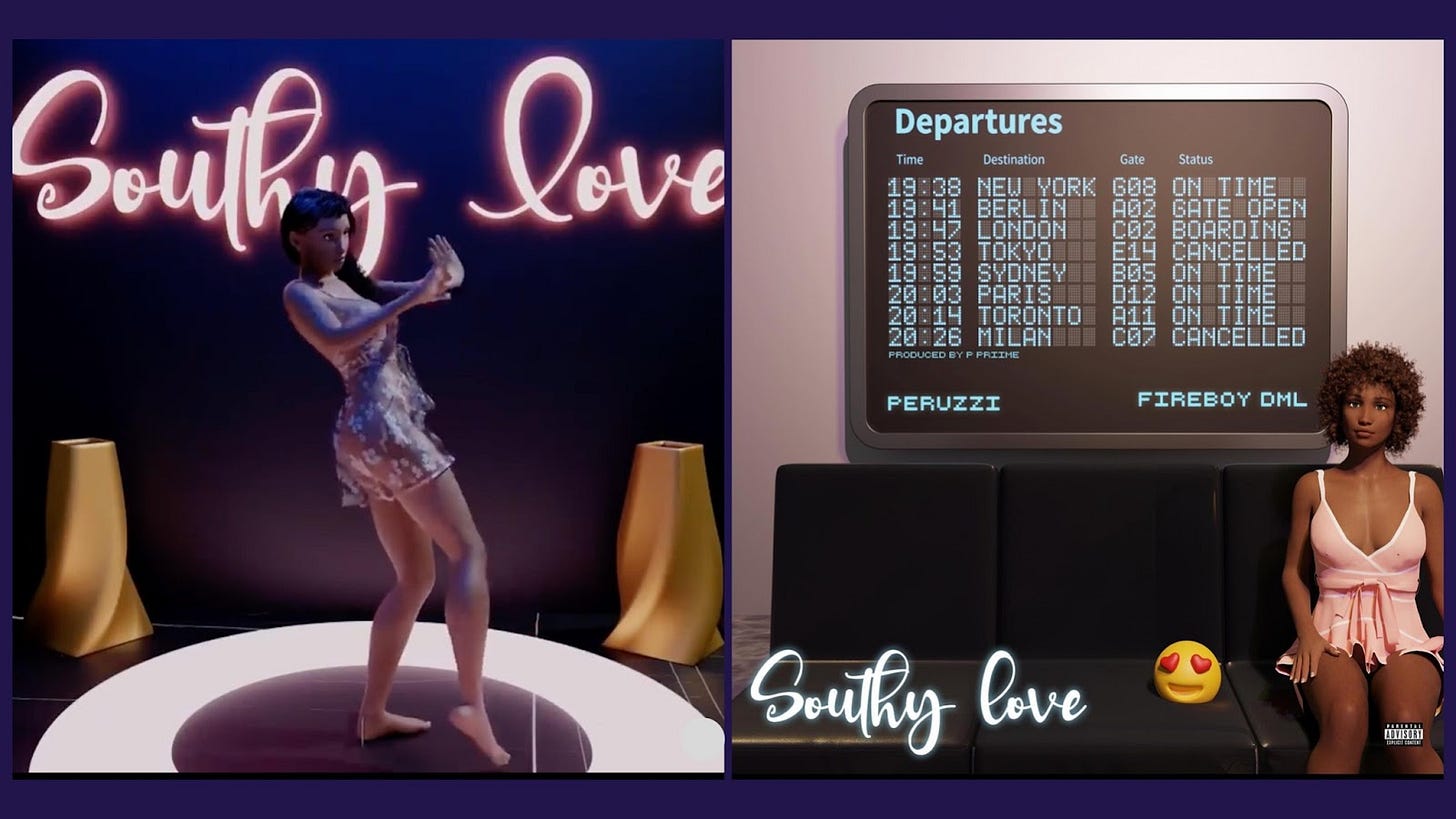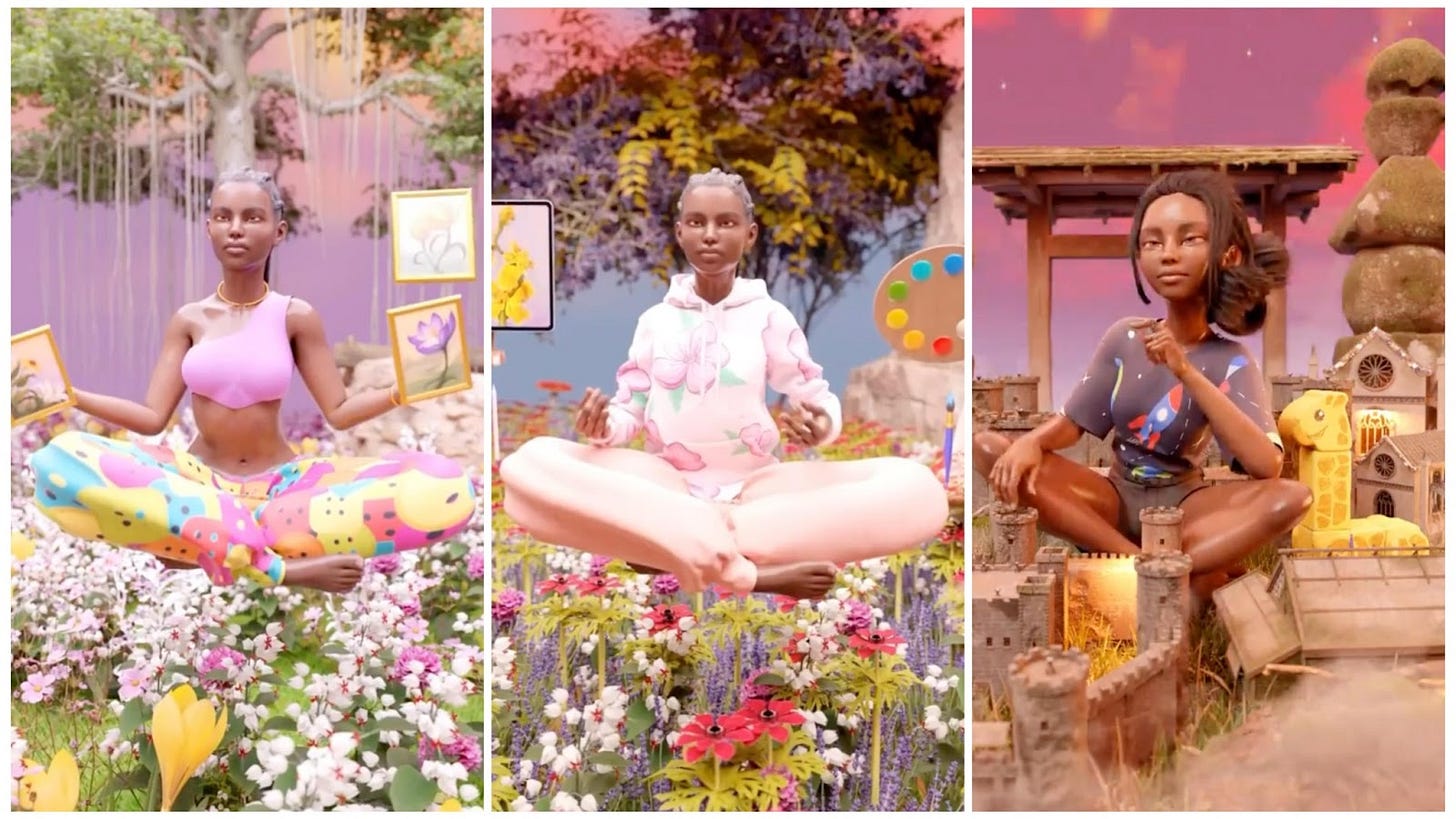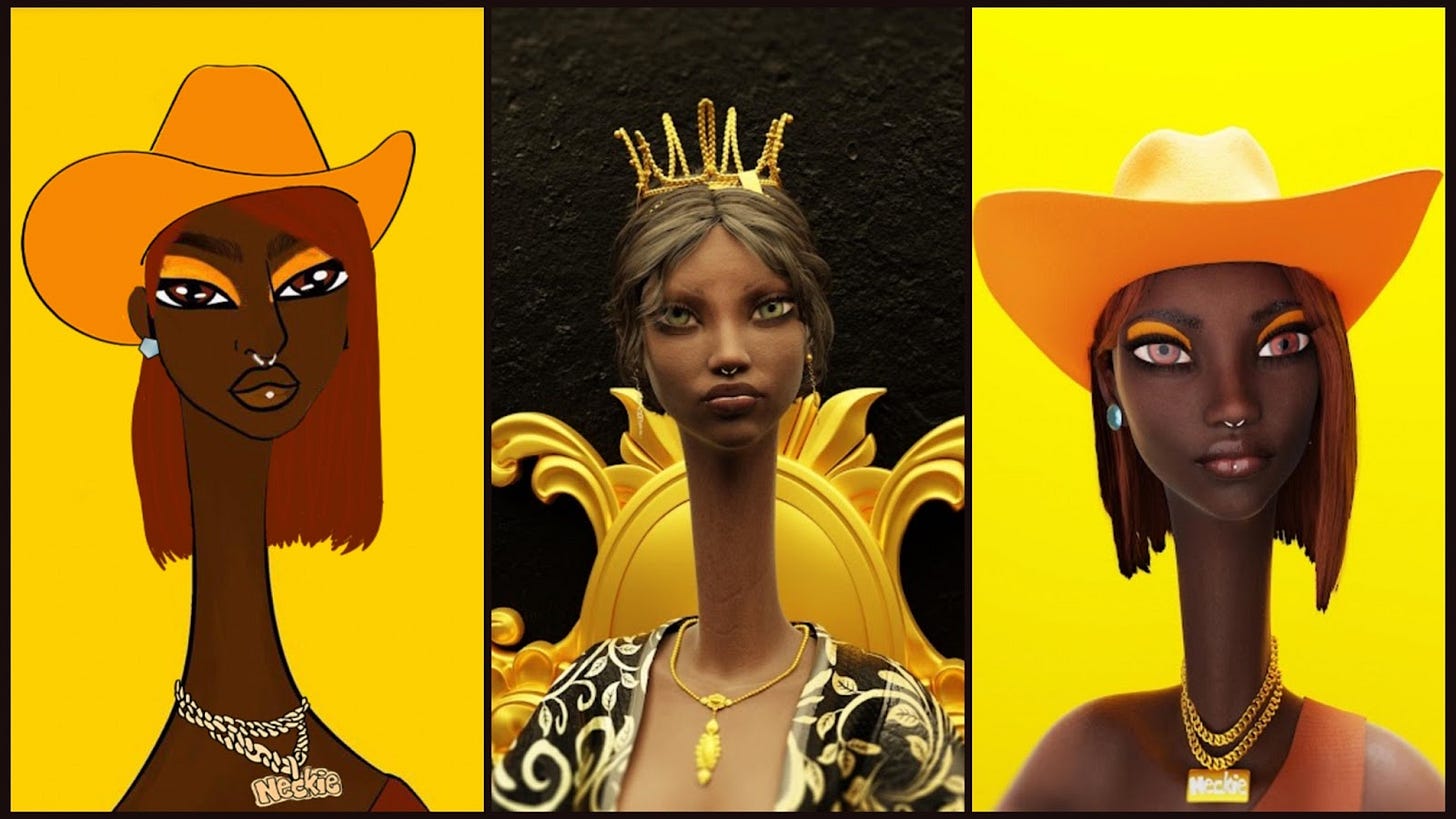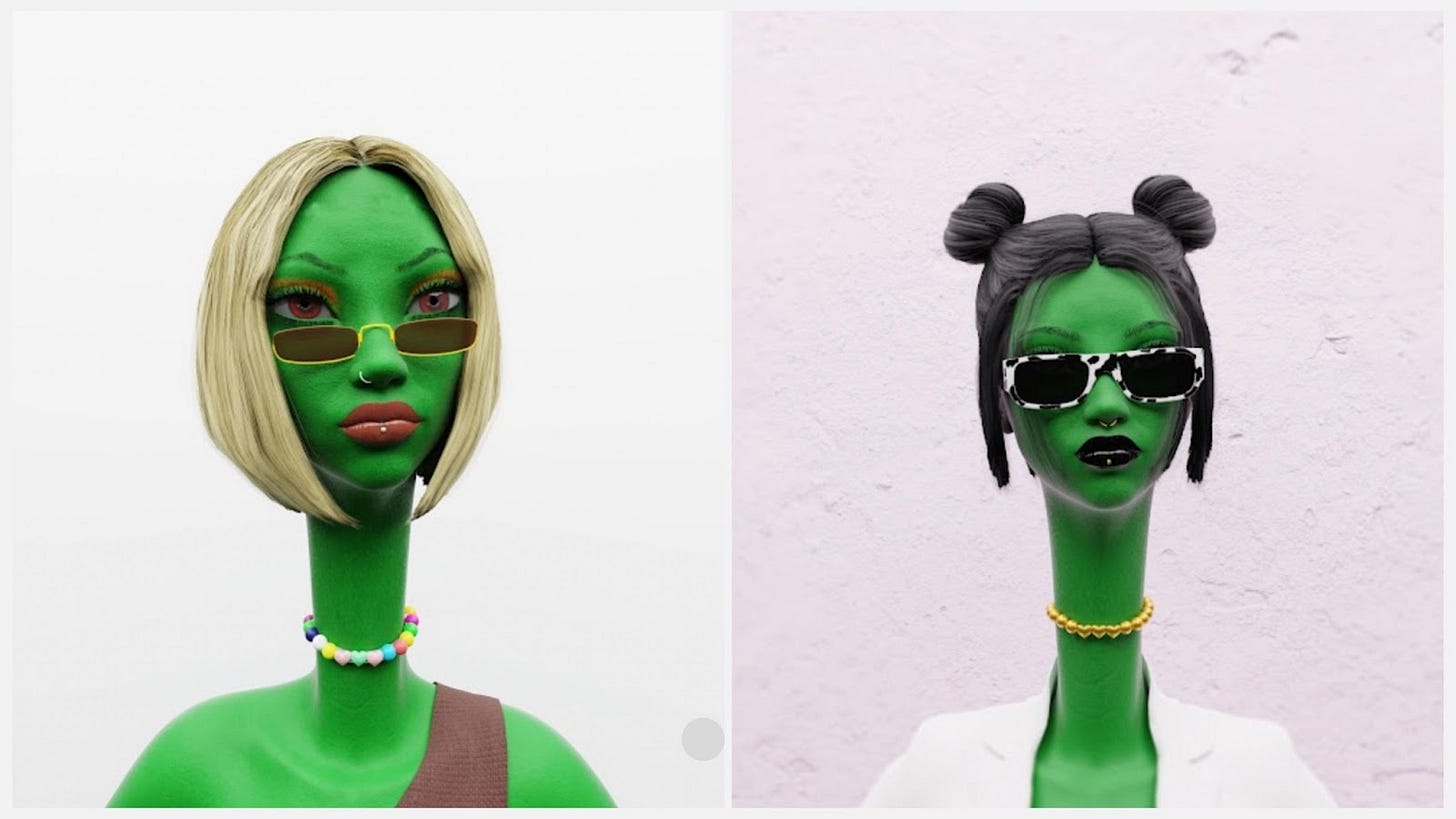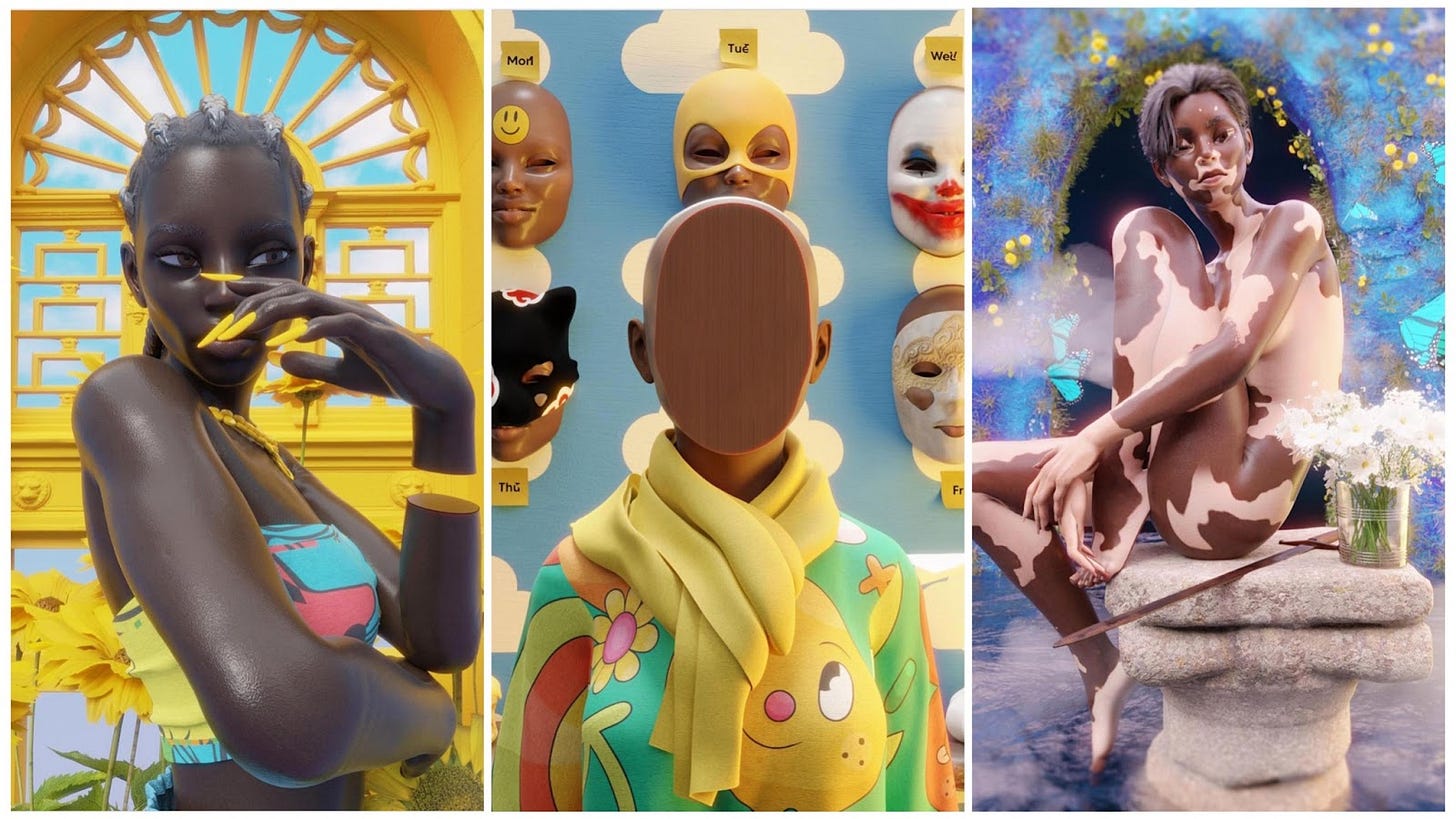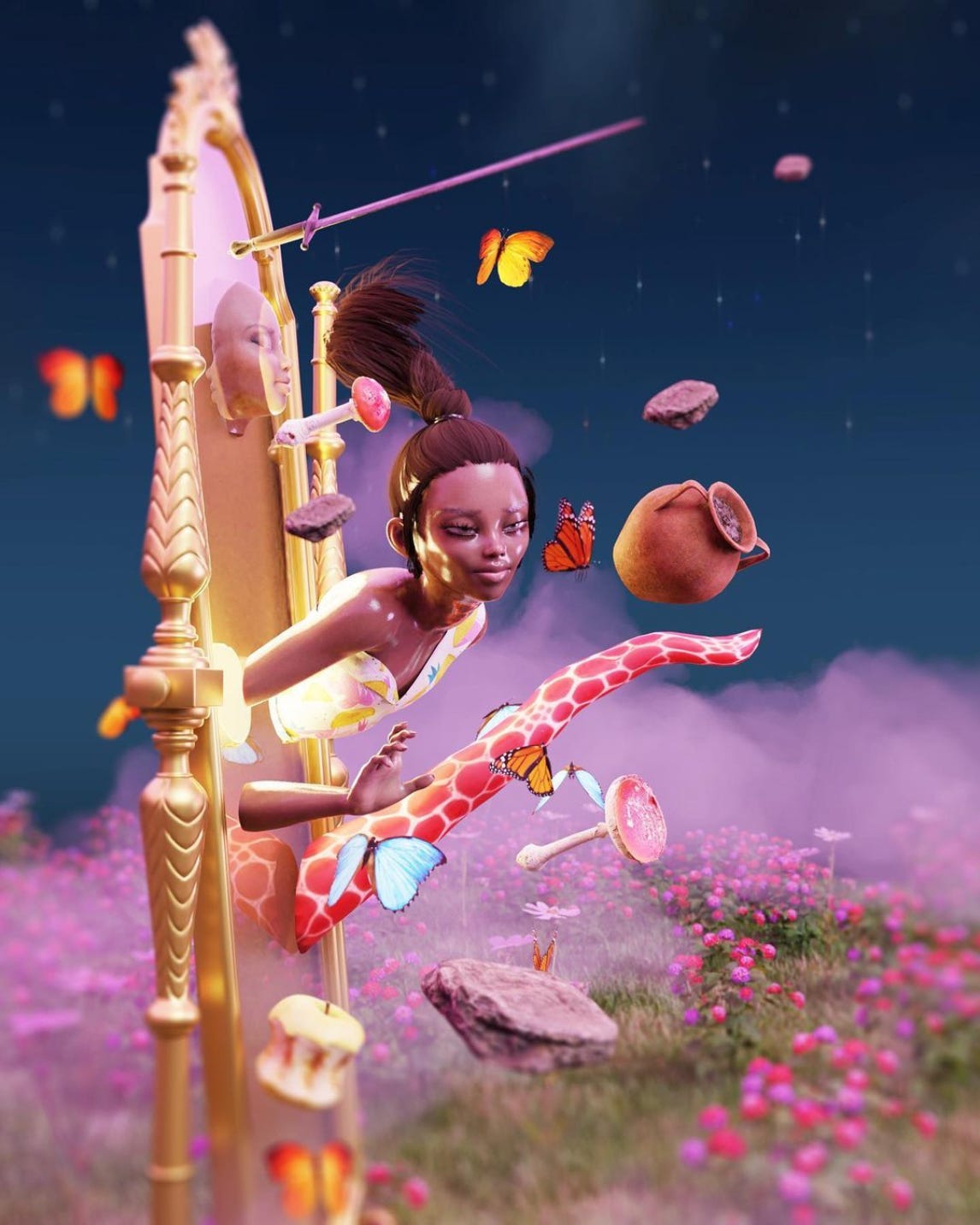Zahir’s NFT success story: Artistic passion and a little kindness
From zero sales in three months to earning 48Eth in a week, this is a story of talent, grit, and the gift of goodwill.
The turning point in 24-year-old Zahir’s NFT journey started with the kindness shown to him by a collector. Now, he’s returning the favor by supporting other African artists in the NFT space.
***
You cannot but be inspired by Zahir’s story when you hear him speak about the events that facilitated his success as an NFT artist.
The 3D artist opens up about struggling to find his footing in the NFT space, the constraints his geographic environment placed on him, and how the pure kindness of a collector he met online fast-tracked his success.
For new NFT artists, Zahir also shares the four things he considers when minting a piece.
Zahir before NFTs
I started art in 2016 [as an undergraduate]. I wanted to print a t-shirt to wear, so I downloaded Photoshop and watched some tutorials on YouTube. When I printed the shirt, I really liked it. That led to me trying out photo manipulation.
I wanted to be a filmmaker, and I even got an internship to do film. When the pandemic hit, I told myself I needed to look for other places where I could make more money. In January 2020, I joined a creative group chat with people who were into 3D art. That’s how I turned to 3D art.
At that time, it was in demand; everyone wanted to use 3D for their song covers. With 3D, you can create your own world. You have control over what you want it to be.
The first time I downloaded a 3D app to try, I couldn’t make sense of it. So I dropped it. But, after seeing the progress of others, I felt if I didn't learn 3D art, I would lose [potential] customers. Later on, I tried it again and started getting better at it.
I posted a 3D piece on Twitter and got good feedback on it. So, I continued. I watched tutorials on YouTube and tried my hand at different things. As soon as I finished school in 2020, I started doing 3D cover commissions. At some point, I got to work with Masterkraft and Peruzzi on the cover of Southy Love.
From music to Web3
I was just trying to get into the mainstream space in the music industry. I wanted to continue making covers and visualising. Then in December 2020, I came across Lethabo Huma on Twitter. When I saw the prices her art pieces were going for on SuperRare, it sparked my interest in NFTs.
I was intrigued by how much artists could make with their pieces compared to what we got for commissions. I was doing commissions and covers for $150 (about ₦60,000). So, imagine my surprise when I saw Lethabo selling pieces for 2Eth (about ₦850k today).
The drought
In February 2021, I got a Foundation invite and joined the marketplace. But for the first three months, I wasn't able to sell anything.
I used the money I made from commissions to mint. At the time, minting on KnownOrigin was about $150. I minted eight pieces, but there were no sales. I was losing money.
Being in Nigeria and having to spend $150 to mint was tough. It didn't seem sustainable. At one point, I stopped minting because I thought selling NFTs wasn’t what I was meant to do.
That was until a friend of mine, Moyin, who is also a 3D artist, made a couple of sales on KnownOrigin, and then bought one of my pieces for 0.3Eth. He gave me hope. So, I started minting again. Then I had another sale for 0.2Eth, and then another. These sales gave me the push I needed to keep going.
There was a period where I didn’t sell anything, so I joined OpenSea to try my hands on editions. In August 2021, I minted my first edition on OpenSea, an animated 3D pie called Happy. I had two sales on it.
But months passed, and there weren’t any more sales. On OpenSea, each piece in an edition is listed individually. I didn’t know that, so though I had 10 pieces, I only listed two. I didn’t sell after that, and I wondered why everything had stopped again.
His breakthrough
I learnt to list properly three months after releasing my first edition. A collection by Nyla, Long Neckie Ladies, had dropped that November, and I bought one. People were doing derivatives of their long neckie ladies, and I did one of my 10 editions as well. I sold all 10 of my derivatives on the same day.
Long Neckie Ladies derivatives
What happened next was a random guy on Twitter mentioned a piece I minted to say he thought it was “hard”. He bought two of my pieces, then he sent me a DM. He’d sent the link to his friends who were also collectors.
After that, I just kept seeing OpenSea emails saying, “Your item sold. Your item sold.” I sold all 10 pieces that day.
Originally, I wanted to create a new collection of 3D animations depicting just happiness. But he suggested I make the piece, Happy, into a collection with different human emotions.
So, I made another about fear. Before I even tweeted about it, he sent it to his collector’s group, and all 10 sold out in like a minute. I had just sold out for the third time that August.
The turning point
NFT Kid, the guy on Twitter, urged me to be quick to work on my next collection. So, there I was working overtime to create more pieces. I put out the next one, and everything sold out fast, still because of him. I was on a roll.
Then he sent me an OpenSea option that read, “To be featured on the home page, use this hashtag.” He tagged a guy called Nate, who works at OpenSea, to my work, and Nate thought it was dope. So, I put out two more pieces of the collection, and I sold those out as well.
I was content. I’d made about 2Eth already, and I felt like a big boy. But NFT Kid told me to keep tagging OpenSea on my pieces online.
It was 2 am in Nigeria on the 7th of September. I was watching a series when he texted me on iMessage to check OpenSea quickly. When I did, I saw my piece on their front page.
My earlier collections had sold out at 1Eth. And though people believed in the collection, I felt sorry for them because I didn’t know why they were buying my artwork for 1Eth.
Long Neckie Ladies derivatives
When the front page endorsement happened, before morning, the collection skyrocketed from 1Eth to 48Eth. Everything was happening so fast, and it was unreal. At the end of the feature, I did 52Eth volumes on the collection. That was the turning point for me in my NFT journey.
Spreading the hope
I think I've been a first collector for a few Nigerian NFTs. I know about six or seven people who, when they started, I bought their work the moment I saw their link.
I didn't want people to feel what I felt at that time. I didn't want people to wait three months for their first sale. If people didn’t buy my piece then, I might have quit. They gave me hope, so I try to pass that on.
Nowadays, there’s a stronger support system compared to the way it was before. Nigerian artists are supporting each other. People like Yinkore, Jesse, and Shutterbug are supporting new artists as well.
I think Africans have the potential to create something close to a Bored Ape, but the way the space is set up—the white advantage that places a barrier on African artists—would make it very difficult.
But we’re closing the gap.
The freedom NFTs gave Zahir
Since I started doing NFTs, the quality of my life has greatly improved.
The first thing that comes with having money of your own is confidence. Your confidence changes dramatically because you’re at a point in your life where you can afford most of your wants.
Now, when people ask how much I charge for commissions, I tell them I don't do commissions anymore. I stopped doing commissions when I started getting more frequent sales.
NFTs give you more money and the freedom to create whatever you want. Clients on commissions would stress you by making different changes, while with NFTs, you just create.
Not just about the art: Next-level NFT perks
Once you have a collection and people start investing in you, it's no longer just about you. So, there's some pressure that comes with it, because now you have to deliver.
It’s no longer just about the money. Now, you’d think, ‘If this person buys this piece, would they be able to sell it? Would they get anything from it in the future?’
In this space, people treat collectors like ATMs or cash cows. I didn't understand this treatment until they started doing it to me.
We should treat collectors better. Give them some form of utility. It will help you as an artist and assure your collectors.
Collections can be very difficult to do. Anyone that has no plan to sustain it long term or provide a form of utility shouldn't do it. I suggest you stay away from collections and just do one-on-ones.
Factors I consider when I want to mint
It gets to a point in the NFT space where you have to think about the bigger picture. You can’t just mint art spontaneously anymore. You have to plan it.
These are the major factors I consider to achieve what I’m going for:
How long ago my last mint was. It’s okay not to mint too many pieces at once, so you have ample time to push each one. I give myself a month.
How much my last mint sold for. One strategic way to increase your price point is by doing it gradually. If your last mint was priced at 0.5Eth, and it was auctioned and sold for 0.7, your next mint price should be 0.65.
How well a piece is received online. Before I mint a piece, I put the piece on social media. I look at the engagement on the piece and its general reception. That gives me a glimpse of how well it might sell. A piece that gains international recognition will sell at a higher price than those with lower likes.
The time of the day. When I decide what I want to put out, I look at the time of the day I’m going to drop it. I have collectors and many NFT followers from different parts of the world, so I try to target a time when more people are online.
You can follow Zahir on Twitter, Instagram, or check out his work here.
Thank you to:
💛Esther Eze for conducting this interview
💛Ruth Zakari for editing this piece
💛Success for transcribing
💛Senilore for publishing

